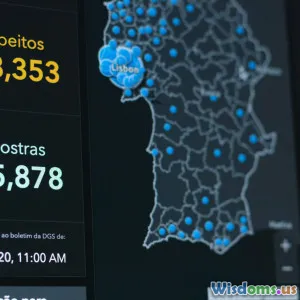
Predictive Analytics Tools Shaping the Future of Terrorism Detection
8 min read Explore how predictive analytics revolutionizes terrorism detection through cutting-edge tools, improving global security by anticipating threats before they materialize. (0 Reviews)
Predictive Analytics Tools Shaping the Future of Terrorism Detection
Introduction
In an increasingly complex and interconnected world, the threat of terrorism continues to challenge global security frameworks. Traditional reactive approaches to terrorism detection have proven insufficient against the evolving tactics of extremist groups and lone actors. What if we could anticipate terrorist activities before they unfold?
Predictive analytics offers this tantalizing possibility — by sifting through vast quantities of data, it enables security agencies to identify patterns, forecast threats, and act proactively. This article explores the profound impact of predictive analytics tools in revolutionizing terrorism detection, highlighting key technologies, real-world successes, and future challenges.
Understanding Predictive Analytics in Terrorism Detection
What Is Predictive Analytics?
At its core, predictive analytics involves analyzing historical and current data sets to predict future events or behaviors. It utilizes statistical algorithms, machine learning, and AI to reveal correlations and trends that would elude traditional analysis.
Why Is It Critical in Terrorism Detection?
Terrorist planning and operations often leave subtle digital and physical traces—communications between suspects, infinite social media posts, travel patterns, financial transactions, even behavioral cues. When mined effectively, these indicators can coalesce into a predictive model flagging potential threats long before an attack.
Key Predictive Analytics Tools Transforming Terrorism Detection
1. Machine Learning Algorithms
Machine learning algorithms can process thousands of data points — from chatter on encrypted messaging platforms to anomalies in financial records.
- Example: The FBI and NSA leverage machine learning in programs like PRISM to analyze metadata for suspicious activities.
- Fact: According to a 2022 RAND report, predictive algorithms helped prevent an estimated 15 high-risk terror plots worldwide between 2018 and 2021.
2. Natural Language Processing (NLP)
NLP extracts meaning from raw text data, whether intercepted communications, social media posts, or other textual sources.
- Real-world usage: Europe’s Europol extensively uses NLP tools to scan open-source intelligence (OSINT) for radicalization signs.
- Insight: NLP models can detect extremist rhetoric shifts and emerging dissident narratives by analyzing language patterns in hundreds of languages.
3. Social Network Analysis (SNA)
SNA maps relationships between individuals and groups to trace terrorist networks and predict collaboration likelihood.
- Case Study: Post-2015 Paris attacks, French intelligence employed SNA to dismantle sleeper cell networks by tracking communications and interactions.
- Effectiveness: SNA helps identify key influencers and facilitates precise interventions, suppressing attack coordination.
4. Geospatial Analytics
Combining location data with predictive algorithms reveals movement patterns of suspects, identifying suspicious congregation or travel relevant to terror activities.
- Example: The Israeli security apparatus integrates geospatial and predictive analytics for monitoring hotspot zones, reducing attempted attacks by 30% over five years.
5. Behavioral Analytics
This tool profiles psychological and behavioral indicators gleaned from diverse data sources to identify individuals at risk of engaging in extremist acts.
- Application: The U.S. Department of Homeland Security uses behavioral analytics to flag unusual social media behavior, shifts in travel habits, or sudden online radicalization.
Impactful Real-World Implementations
Preventing Attacks Through Early Warning
One landmark operation involved the thwarting of a planned terrorist attack at a major international airport in mid-2020. Using integrated predictive analytics platforms combining SNA, NLP, and machine learning, authorities identified suspicious financial transfers and cryptic messages predicting attack logistics.
Enhancing Border Security
Predictive tools analyze travel patterns against historical threats to detect high-risk individuals during immigration screening. Agencies such as the U.S. Customs and Border Protection use these insights powered by AI, preventing potential terrorists from crossing borders undetected.
Disrupting Online Radicalization
The proliferation of online extremist content has spurred predictive analytics projects aimed at curbing radicalization. Tools leveraging NLP and sentiment analysis identify trending hate speech and recruit messaging, triggering timely interventions.
- For instance, Google’s Jigsaw unit created databases tracking extremist videos, enabling platforms like YouTube to remove harmful content effectively.
Challenges and Ethical Considerations
Data Privacy Concerns
Predictive analytics necessitates access to vast amounts of personal data, raising critical privacy issues. Without stringent safeguards, mass surveillance risks infringing on civil liberties and fueling public mistrust.
Bias in Algorithms
If training data reflects societal biases, predictive models may discriminate against minority populations unfairly, leading to wrongful profiling and violations of rights.
False Positives and Accountability
Alarming rates of false positives can overwhelm law enforcement and lead to unjustified scrutiny of innocent individuals. Rigorous validation, transparency in algorithm design, and human oversight remain essential.
International Collaboration Complexities
Counter-terrorism is inherently global, yet data-sharing agreements among nations face legal, political, and ethical hurdles limiting the effectiveness of cross-border predictive models.
The Future: AI and Beyond
Integrating Multi-Source Data Streams
Future systems will combine satellite imagery, IoT sensor data, behavioral scores, and open-source intel to craft unparalleled threat profiles.
Real-Time Threat Forecasting
Advancements promise real-time monitoring with automated threat alerts delivered to security agencies, expediting responses and mitigating risks.
Democratizing Predictive Security
Adapting tools for use by local law enforcement and even community organizations can help create grassroots networks of protection.
Ethical AI Frameworks
The creation of standardized ethical frameworks will guide the design and deployment of predictive analytics tools, balancing security needs with fundamental rights.
Conclusion
The integration of predictive analytics tools marks a paradigm shift in terrorism detection—from reactive to proactive defense. Machine learning, NLP, social network and behavioral analytics are collectively enhancing the precision and timeliness of threat identification. While challenges around privacy, bias, and international cooperation remain, the potential to save lives and fortify security cannot be overstated.
Policymakers, technologists, and civil society must collaborate to harness these cutting-edge tools responsibly and transparently. As terrorism tactics evolve, so too must our predictive capabilities—ensuring a safer future built not on fear but foresight.
By embracing predictive analytics, the global community takes a decisive step toward preempting terror threats and safeguarding millions worldwide.
Rate the Post
User Reviews
Popular Posts

















